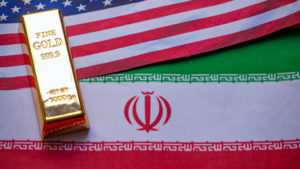Since the end of 2019, gold prices have been on a breakout trajectory. Now, in response to rising tensions with Iran, things are getting very interesting.
The news that the United States had bombed Iranian Major General Qassem Soleimani increased the perception of risk in the Middle East, and drove the price of gold even higher.
I have always suggested to investors that they maintain a gold component in their portfolios, not as a road to riches, but as an insurance policy against inflation, disaster, and war. Typically when every other assets’ price is falling, gold’s is rising.
Here’s how I explained it back in 1986:
Throughout history gold has been the money of last resort. Every central bank in the industrialized world holds gold as an international reserve asset. Countries like Switzerland maintain a high percentage of gold holdings in relation to total money supply.
What is the proper course to take in building a gold cornerstone for investment portfolios? Most individuals look to bullion coins, mining shares, and gold certificates from major banks. I like certificates when an individual has no interest whatsoever in gold and invests in gold strictly as a portfolio tool. Certificates also have appeal for institutional investors. Gold mining shares should not be used as a gold proxy for cornerstone positions.
Gold share mutual funds should be considered in the stock fund section of one’s portfolio, but not in the gold cornerstone section. Shares are subject to political and natural disruptions that invalidate their inclusion as gold cornerstone investments.
Since I wrote those words, a lot has changed in the way Americans can invest in gold. The creation of gold-backed ETFs was probably the most significant development. To learn more about how to invest in gold today, click here.
If you would like to understand how my family-run investment counsel firm uses precious metals to craft counterbalanced portfolios, sign up for Richard C. Young & Co., Ltd’s monthly client letter. The letter is free, even for non-clients. You don’t want to miss it.
Originally posted on Young’s World Money Forecast.

